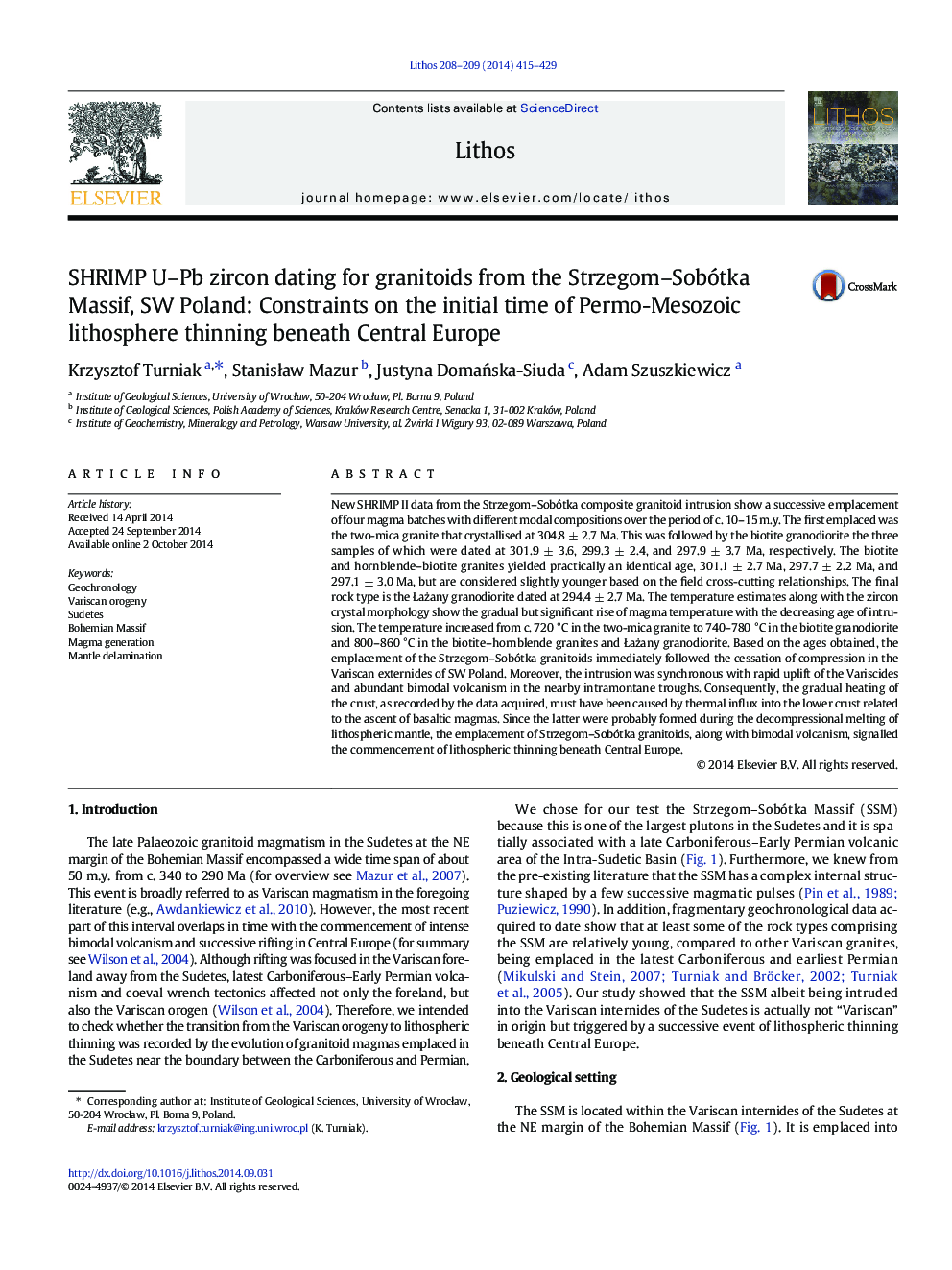| کد مقاله | کد نشریه | سال انتشار | مقاله انگلیسی | نسخه تمام متن |
|---|---|---|---|---|
| 4715923 | 1638671 | 2014 | 15 صفحه PDF | دانلود رایگان |

• New SHRIMP II data from the Strzegom–Sobótka granitoid intrusion are provided.
• The data show an emplacement of successive magma batches over the period of 10 m.y.
• The temperature in a magma source was increasing with passing time.
• The gradual heating of the crust was caused by the ascent of basaltic magmas.
• The emplacement of granitoids signalled the start of lithospheric thinning.
New SHRIMP II data from the Strzegom–Sobótka composite granitoid intrusion show a successive emplacement of four magma batches with different modal compositions over the period of c. 10–15 m.y. The first emplaced was the two-mica granite that crystallised at 304.8 ± 2.7 Ma. This was followed by the biotite granodiorite the three samples of which were dated at 301.9 ± 3.6, 299.3 ± 2.4, and 297.9 ± 3.7 Ma, respectively. The biotite and hornblende–biotite granites yielded practically an identical age, 301.1 ± 2.7 Ma, 297.7 ± 2.2 Ma, and 297.1 ± 3.0 Ma, but are considered slightly younger based on the field cross-cutting relationships. The final rock type is the Łażany granodiorite dated at 294.4 ± 2.7 Ma. The temperature estimates along with the zircon crystal morphology show the gradual but significant rise of magma temperature with the decreasing age of intrusion. The temperature increased from c. 720 °C in the two-mica granite to 740–780 °C in the biotite granodiorite and 800–860 °C in the biotite–hornblende granites and Łażany granodiorite. Based on the ages obtained, the emplacement of the Strzegom–Sobótka granitoids immediately followed the cessation of compression in the Variscan externides of SW Poland. Moreover, the intrusion was synchronous with rapid uplift of the Variscides and abundant bimodal volcanism in the nearby intramontane troughs. Consequently, the gradual heating of the crust, as recorded by the data acquired, must have been caused by thermal influx into the lower crust related to the ascent of basaltic magmas. Since the latter were probably formed during the decompressional melting of lithospheric mantle, the emplacement of Strzegom–Sobótka granitoids, along with bimodal volcanism, signalled the commencement of lithospheric thinning beneath Central Europe.
Journal: Lithos - Volumes 208–209, November 2014, Pages 415–429